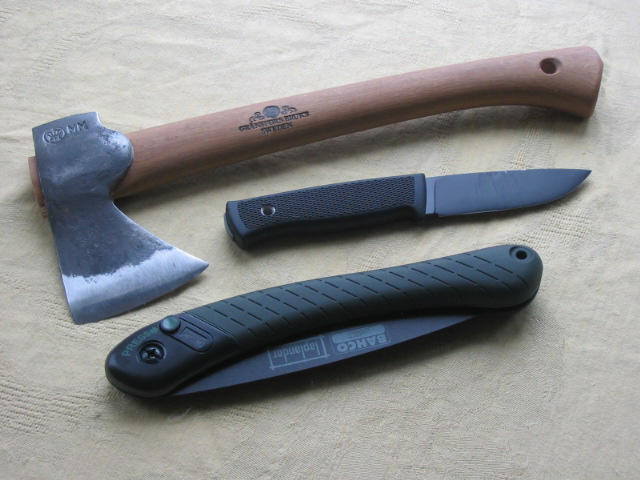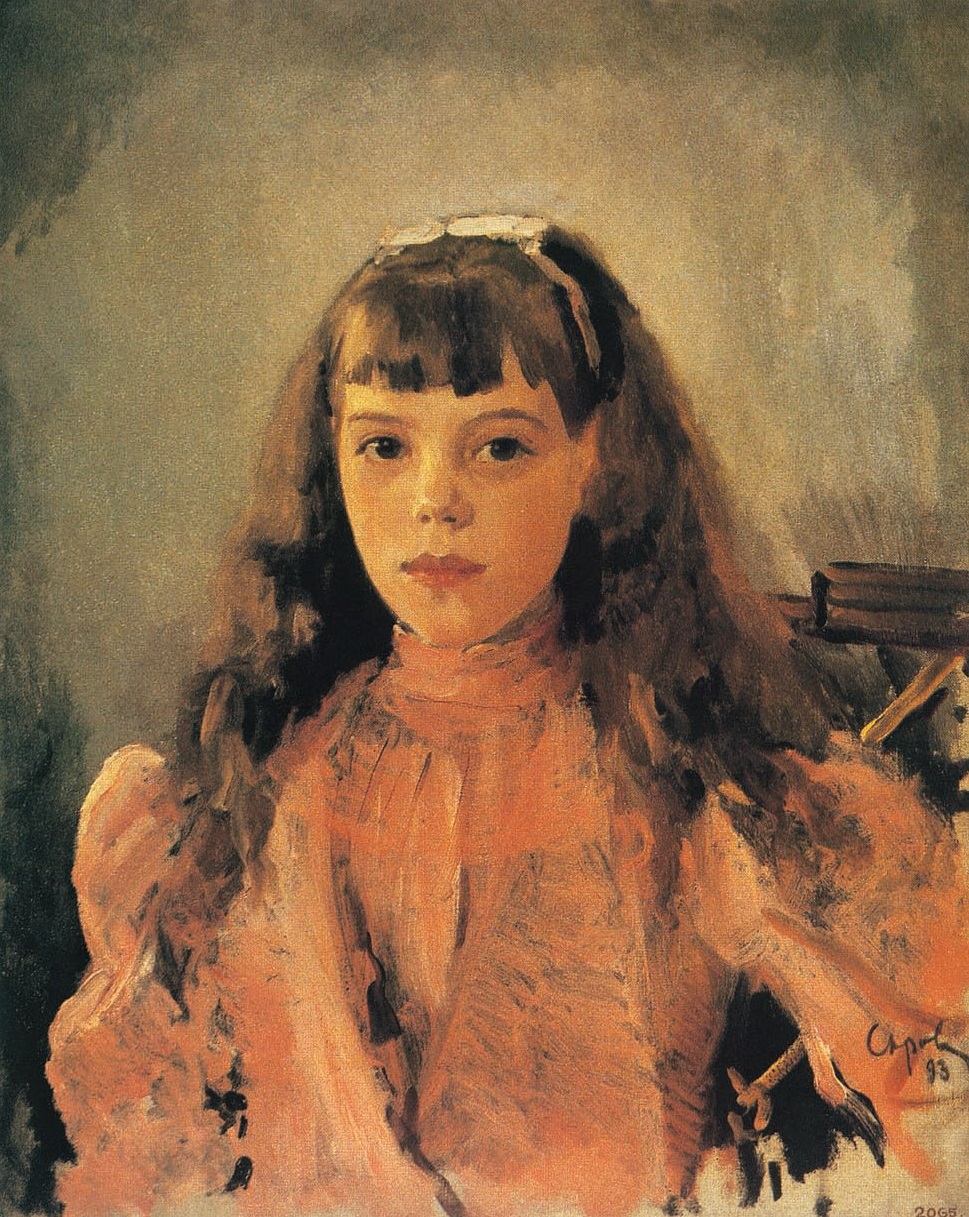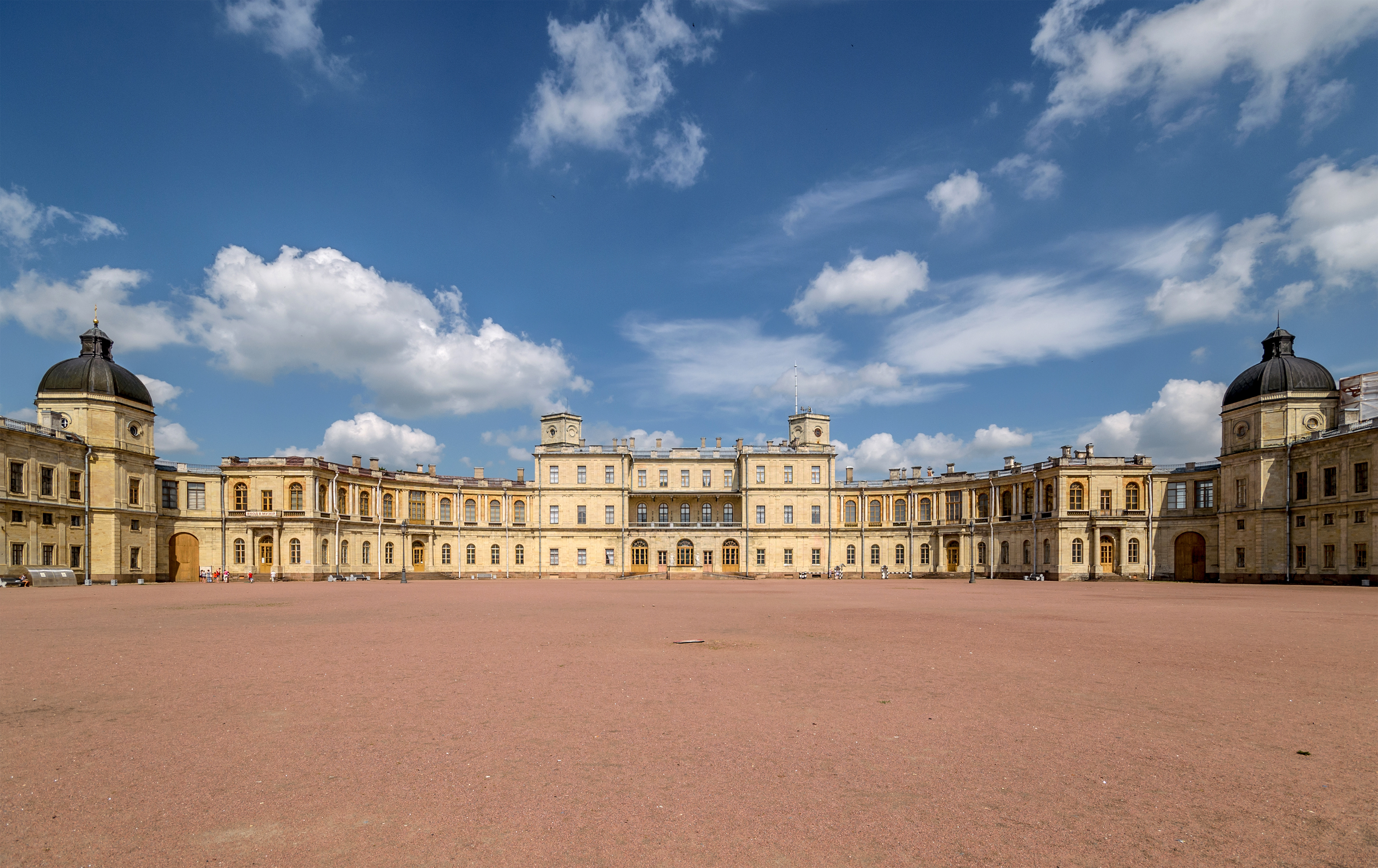|
Grand Duke Michael Alexandrovich Of Russia
Grand Duke Michael Alexandrovich of Russia (russian: Михаи́л Алекса́ндрович, r=Mikhail Aleksandrovich; 13 June 1918) was the youngest son and fifth child of Emperor Alexander III of Russia and youngest brother of Nicholas II. At the time of his birth, his paternal grandfather Alexander II was still the reigning Emperor of All the Russias. Michael was fourth-in-line to the throne after his father and elder brothers Nicholas and George. After the assassination of his grandfather in 1881, he became third-in-line and, in 1894, after the death of his father, second-in-line. George died in 1899, leaving Michael as heir presumptive to Tsar Nicholas II. The birth of Nicholas's son Alexei in 1904 moved Michael back to second-in-line, but Alexei was gravely ill with hemophilia and Michael suspected the boy would die, leaving him as heir. Michael caused a commotion at the imperial court when he took Natalia Sergeyevna Wulfert, a married woman, as a lover. Nichol ... [...More Info...] [...Related Items...] OR: [Wikipedia] [Google] [Baidu] |
Natalia Brasova
Natalia Brasova, Countess Brasova (russian: Наталья Брасова; born Natalia Sergeyevna Sheremetyevskaya, russian: Ната́лья Серге́евна Шереме́тьевская; 27 June 1880 – 26 January 1952) was a Russian noblewoman who married, as her third husband, Grand Duke Michael Alexandrovich of Russia. Early life Natalia, or Natasha to her friends, was the youngest of three daughters of a Moscow lawyer, Sergei Alexandrovich Sheremetevsky. She was born at a rented summer ''dacha'' at Perovo, on the outskirts of Moscow. Sheremetevsky employed 11 other lawyers, and was a member of the minor nobility, but had no title and was essentially a professional middle-class man. He was a sometime deputy in the Moscow City Duma, and a trustee of the Arbat City School. In the first year of her life, Natalia and her family lived in a rented apartment near the Moscow Kremlin on Ilinka. Their landlord, wealthy industrialist Aleksey Khludov, was also Natalia's godfath ... [...More Info...] [...Related Items...] OR: [Wikipedia] [Google] [Baidu] |
Tsarevich Alexei Nikolaevich Of Russia
Alexei Nikolaevich (russian: link=no, Алексе́й Никола́евич) (12 August .S. 30 July1904 – 17 July 1918) was the last Tsesarevich (heir apparent to the throne of the Russian Empire). He was the youngest child and only son of Emperor Nicholas II and Empress Alexandra Feodorovna. He was born with haemophilia, which his parents tried treating with the methods of a peasant faith healer named Grigori Rasputin. After the February Revolution of 1917, the Romanovs were sent into internal exile in Tobolsk, Siberia. After the October Revolution, the family was initially to be tried in a court of law, before the intensification of the Russian Civil War made execution increasingly favorable in the eyes of the Soviet government. With White Army soldiers rapidly approaching, the Ural Regional Soviet ordered the murder of Alexei, the rest of his family, and four remaining retainers on 17 July 1918. Rumors persisted for decades that Alexei had escaped his execution, wi ... [...More Info...] [...Related Items...] OR: [Wikipedia] [Google] [Baidu] |
Equestrianism
Equestrianism (from Latin , , , 'horseman', 'horse'), commonly known as horse riding (Commonwealth English) or horseback riding (American English), includes the disciplines of riding, Driving (horse), driving, and Equestrian vaulting, vaulting. This broad description includes the use of horses for practical working animal, working purposes, transportation, recreational activities, artistic or cultural exercises, and animals in sport, competitive sport. Overview of equestrian activities Horses are horse training, trained and ridden for practical working purposes, such as in Mounted police, police work or for controlling herd animals on a ranch. They are also used in Horse#Sport, competitive sports including dressage, endurance riding, eventing, reining, show jumping, tent pegging, equestrian vaulting, vaulting, polo, horse racing, driving (horse), driving, and rodeo (see additional equestrian sports listed later in this article for more examples). Some popular forms of competi ... [...More Info...] [...Related Items...] OR: [Wikipedia] [Google] [Baidu] |
Bushcraft
Bushcraft is the use and practice of skills, thereby acquiring and developing knowledge and understanding, in order to survive and thrive in a natural environment. Bushcraft skills provide for the basic physiological necessities for human life: food (through foraging, tracking, hunting, trapping, fishing), water sourcing and purification, shelter-building, and firecraft. These may be supplemented with expertise in twine-making, knots and lashings, wood-carving, campcraft, medicine/health, natural navigation, and tool and weapon making. Bushcraft includes the knowledge to handle certain tools such as bushcraft knives and axes. A bushcrafter can use these tools to create many different types of constructions, from dugout canoes to a-frame shelters. There are various types of shelters to construct or use in the wilderness. The first is a purpose-built shelter like a tent. Another example is an improvised shelter, like using a large tarp or blanket as a tent. Indigenous shelters ... [...More Info...] [...Related Items...] OR: [Wikipedia] [Google] [Baidu] |
Grand Duchess Olga Alexandrovna Of Russia
Grand Duchess Olga Alexandrovna of Russia (russian: О́льга Алекса́ндровна; – 24 November 1960) was the youngest child of Emperor Alexander III of Russia and younger sister of Emperor Nicholas II. Olga was raised at the Gatchina Palace outside Saint Petersburg. Olga's relationship with her mother, Empress Marie, the daughter of King Christian IX of Denmark, was strained and distant from childhood. In contrast, she and her father were close. He died when she was 12, and her brother Nicholas became emperor. In 1901, at 19, she married Duke Peter Alexandrovich of Oldenburg, who was privately believed by family and friends to be homosexual. Their marriage of 15 years remained unconsummated, and Peter at first refused Olga's request for a divorce. The couple led separate lives and their marriage was eventually annulled by the Emperor in October 1916. The following month Olga married cavalry officer Nikolai Kulikovsky, with whom she had fallen in love several ye ... [...More Info...] [...Related Items...] OR: [Wikipedia] [Google] [Baidu] |
Gatchina Palace
The Great Gatchina Palace (russian: Большой Гатчинский дворец) is a palace in Gatchina, Leningrad Oblast, Russia. It was built from 1766 to 1781 by Antonio Rinaldi (architect), Antonio Rinaldi for Count Grigori Grigoryevich Orlov, who was a favourite of Catherine the Great, in Gatchina, a suburb of the royal capital Saint Petersburg. The Gatchina Palace combines classical architecture and themes of a medieval castle with ornate interiors typical of Russian classicism, located on a hill in central Gatchina next to Lake Serebryany. The Gatchina Palace became one of the favourite residences of the Russian Imperial Family, and during the 19th century was an important site of Russian politics. Since the February Revolution of 1917, February Revolution in 1917 it has been a museum and public park, and received UNESCO World Heritage Site status in 1990. History Imperial era In 1765, Catherine the Great, the Empress of the Russian Empire, purchased from Prince B ... [...More Info...] [...Related Items...] OR: [Wikipedia] [Google] [Baidu] |
Maria Alexandrovna (Marie Of Hesse)
Maria Alexandrovna ( rus, Мария Александровна), born Princess Marie of Hesse and by Rhine (8 August 1824 – 3 June 1880), was Empress of Russia as the first wife and political adviser of Emperor Alexander II. She was one of the founders of the Russian Red Cross Society. The legal daughter of Grand Duke Ludwig II of Hesse and Princess Wilhelmine of Baden, Wilhelmine Marie was raised in austerity but was well educated by her mother, who died when her daughter was very young. She was only 14 years old when the Tsesarevich Alexander Nikolaevich (later Tsar Alexander II of Russia) fell in love with her while he was traveling to Western Europe. She arrived in Russia in September 1840, converted to the Eastern Orthodox Church, changed the name Wilhelmine Marie for Maria Alexandrovna, and took the title of Grand Duchess. For fourteen years (1840–1855), she was Tsesarevna, the wife of the heir of the Russian throne. Although she did not enjoy court life because of h ... [...More Info...] [...Related Items...] OR: [Wikipedia] [Google] [Baidu] |
Louise Of Hesse-Kassel
da, Louise Wilhelmine Frederikke Caroline Auguste Julie , succession = Queen consort of Denmark , image = Louise of Hesse-Kassel.jpg , reign = 15 November 1863 – 29 September 1898 , spouse = , issue = , house = Hesse-Kassel , father = Prince William of Hesse-Kassel , mother = Princess Charlotte of Denmark , birth_date = , birth_place = Kassel, Electorate of Hesse, German Confederation , death_date = , death_place = Bernstorff Palace, Gentofte, Denmark , signature = Louise of Hesse-Kasse signature.svg , burial_place = Roskilde Cathedral Louise of Hesse-Kassel (german: Luise Wilhelmine Friederike Caroline Auguste Julie, da, Louise Wilhelmine Frederikke Caroline Auguste Julie; 7 September 1817 – 29 September 1898) was Queen of Denmark as the wife of King Christian IX from 15 November 1863 until her death in 1898. Life Early life Louise was born as the daughter of Prince William of Hesse-Kassel and Princess Charlotte of Denmark ... [...More Info...] [...Related Items...] OR: [Wikipedia] [Google] [Baidu] |
Christian IX Of Denmark
Christian IX (8 April 181829 January 1906) was King of Denmark from 1863 until his death in 1906. From 1863 to 1864, he was concurrently Duke of Schleswig, Holstein and Lauenburg. A younger son of Frederick William, Duke of Schleswig-Holstein-Sonderburg-Glücksburg, Christian grew up in the Duchy of Schleswig as a prince of Schleswig-Holstein-Sonderburg-Glücksburg, a junior branch of the House of Oldenburg which had ruled Denmark since 1448. Although having close family ties to the Danish royal family, he was originally not in the immediate line of succession to the Danish throne. Following the early death of the father in 1831, Christian grew up in Denmark and was educated at the Military Academy of Copenhagen. After unsuccessfully seeking the hand of Queen Victoria of the United Kingdom in marriage, he married his double second cousin, Princess Louise of Hesse-Kassel, in 1842. In 1852, Christian was chosen as heir-presumptive to the Danish throne in light of the expected ... [...More Info...] [...Related Items...] OR: [Wikipedia] [Google] [Baidu] |
Nevsky Prospekt
Nevsky Prospect ( rus, Не́вский проспе́кт, r=Nevsky Prospekt (street), Prospekt, p=ˈnʲɛfskʲɪj prɐˈspʲɛkt) is the main street (high street) in the federal city of Saint Petersburg, St. Petersburg in Russian Federation, Russia. It takes its name from the Alexander Nevsky Lavra, the monastery which stands at the eastern end of the street, and which in turn commemorates the Russian hero Prince Saint Alexander Nevsky (1221–1263). Following his founding of Saint Petersburg in 1703, Tsar Peter the Great, Peter I planned the course of the street as the beginning of the road to Veliky Novgorod, Novgorod and Moscow. The avenue runs from the Admiralty building, Saint Petersburg, Admiralty in the west to the Moskovsky railway station (Saint Petersburg), Moscow Railway Station and, after veering slightly southwards at Vosstaniya Square, to the Alexander Nevsky Lavra. History of the street 18th century Early 18th century. Reign of Peter the Great On Septembe ... [...More Info...] [...Related Items...] OR: [Wikipedia] [Google] [Baidu] |
1888
In Germany, 1888 is known as the Year of the Three Emperors. Currently, it is the year that, when written in Roman numerals, has the most digits (13). The next year that also has 13 digits is the year 2388. The record will be surpassed as late as 2888, which has 14 digits. Events January–March * January 3 – The 91-centimeter telescope at Lick Observatory in California is first used. * January 12 – The Schoolhouse Blizzard hits Dakota Territory, the states of Montana, Minnesota, Nebraska, Kansas, and Texas, leaving 235 dead, many of them children on their way home from school. * January 13 – The National Geographic Society is founded in Washington, D.C. * January 21 – The Amateur Athletic Union is founded by William Buckingham Curtis in the United States. * January 26 – The Lawn Tennis Association is founded in England. * February 6 – Gillis Bildt becomes Prime Minister of Sweden (1888–1889). * February 27 – In West Orange ... [...More Info...] [...Related Items...] OR: [Wikipedia] [Google] [Baidu] |
Russian Revolution Of 1917
The Russian Revolution was a period of political and social revolution that took place in the former Russian Empire which began during the First World War. This period saw Russia abolish its monarchy and adopt a socialist form of government following two successive revolutions and a bloody civil war. The Russian Revolution can also be seen as the precursor for the other European revolutions that occurred during or in the aftermath of WWI, such as the German Revolution of 1918. The Russian Revolution was inaugurated with the February Revolution in 1917. This first revolt focused in and around the then-capital Petrograd (now Saint Petersburg). After major military losses during the war, the Russian Army had begun to mutiny. Army leaders and high ranking officials were convinced that if Tsar Nicholas II abdicated, the domestic unrest would subside. Nicholas agreed and stepped down, ushering in a new government led by the Russian Duma (parliament) which became the Russian Prov ... [...More Info...] [...Related Items...] OR: [Wikipedia] [Google] [Baidu] |











